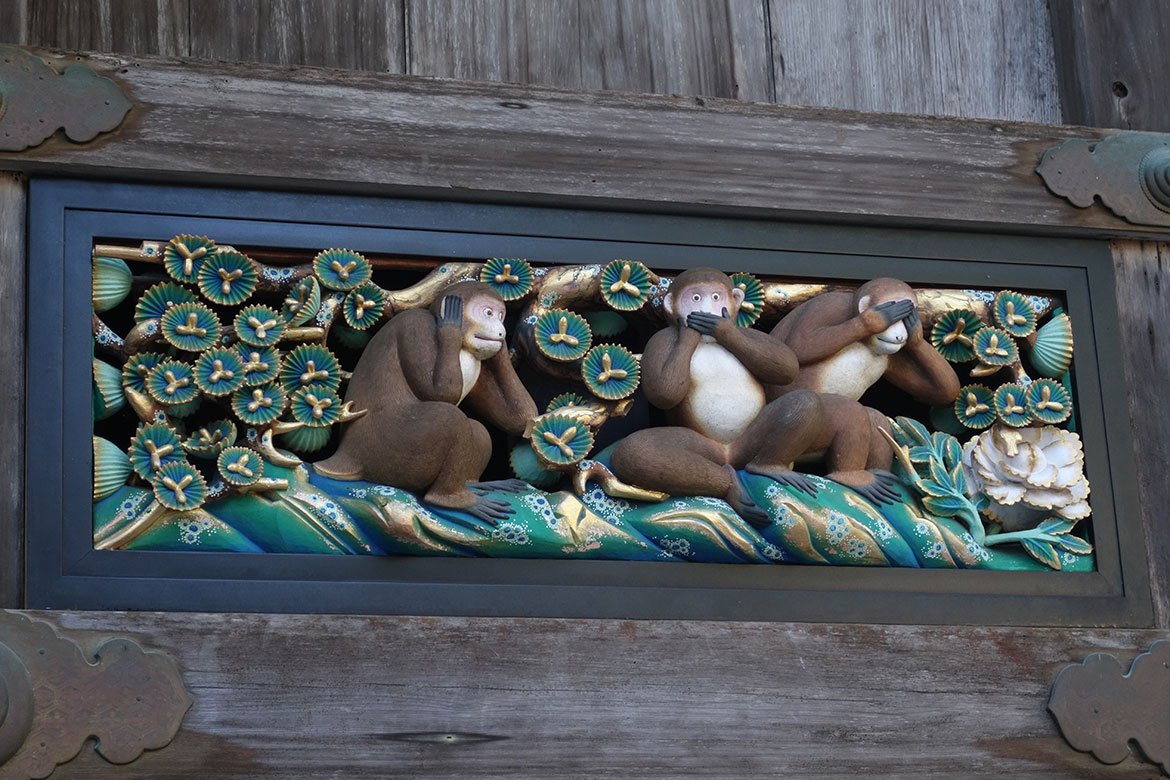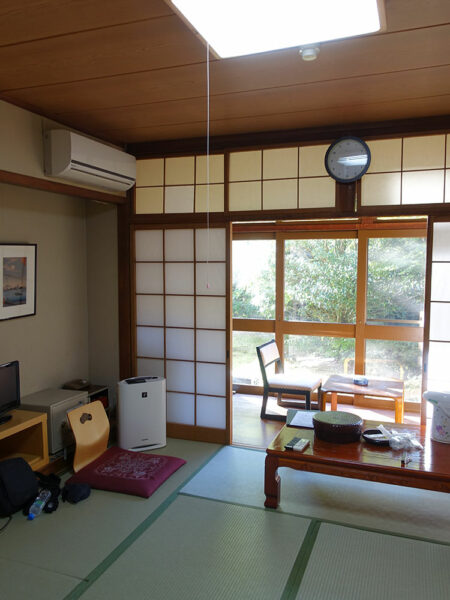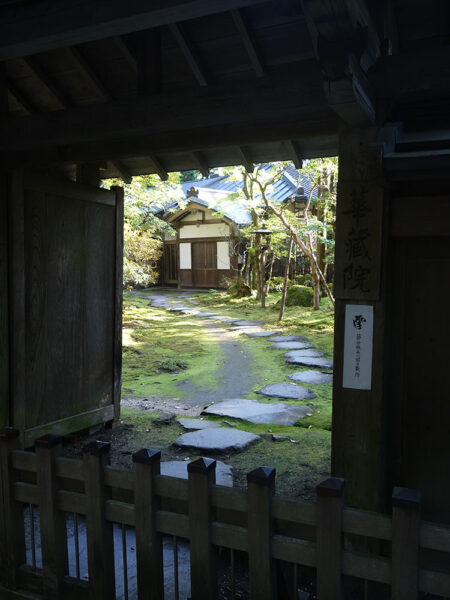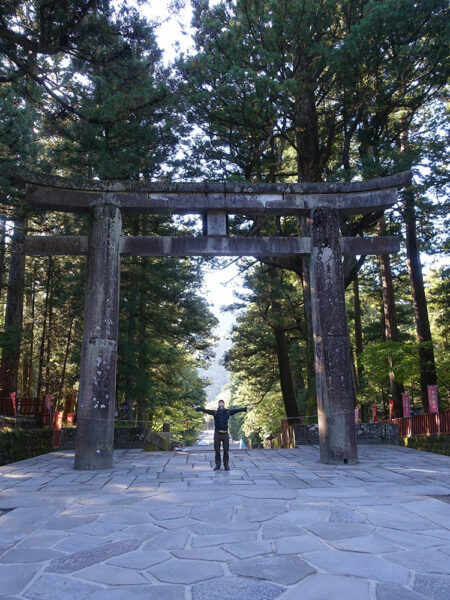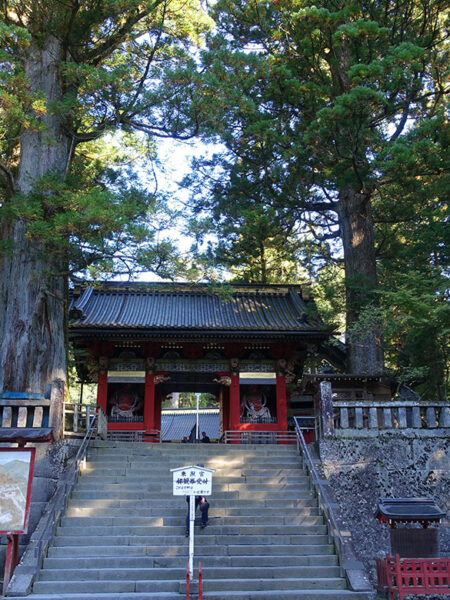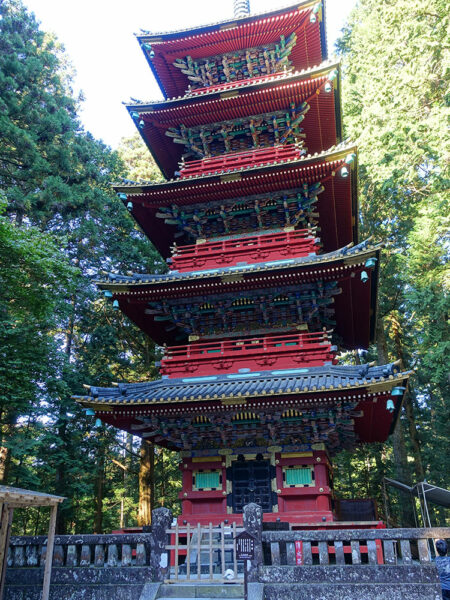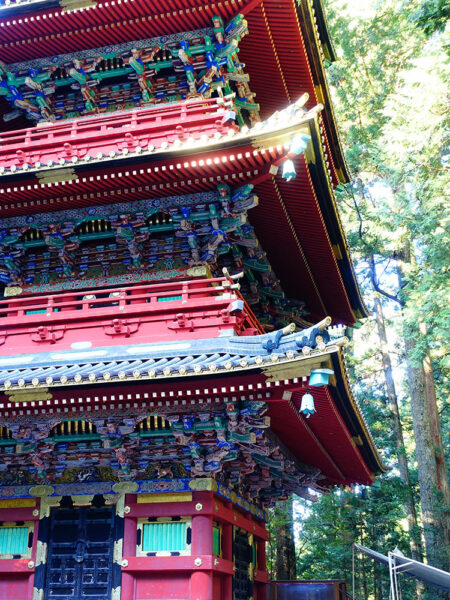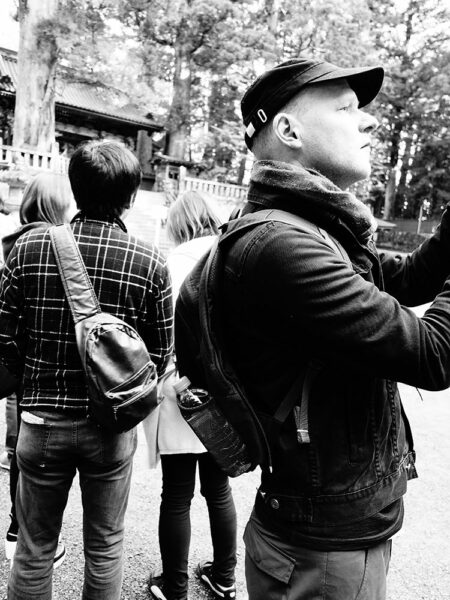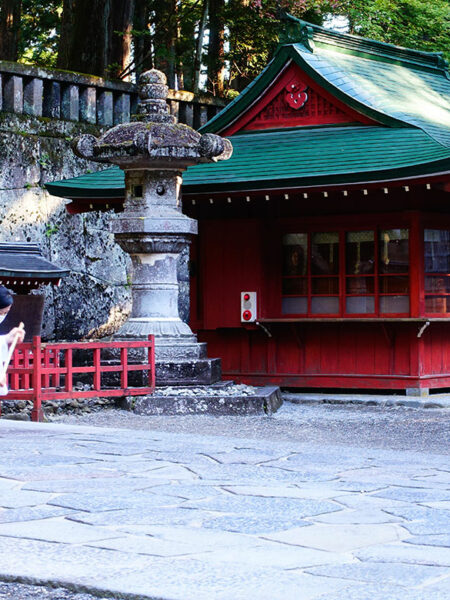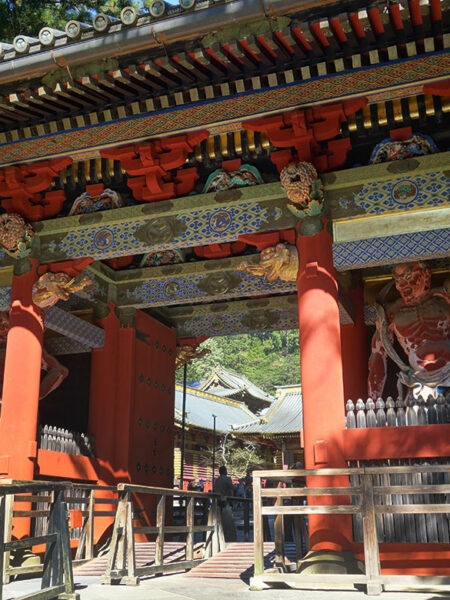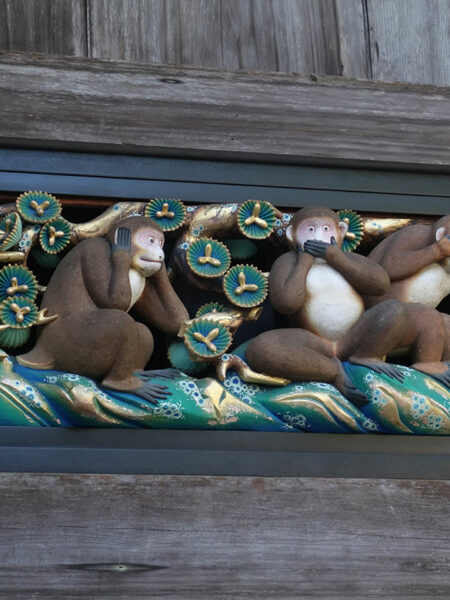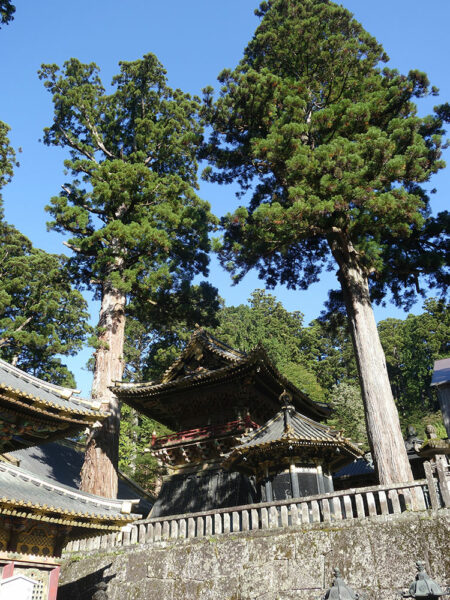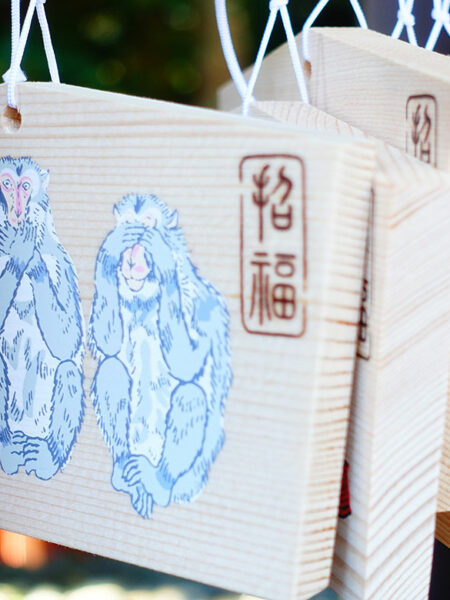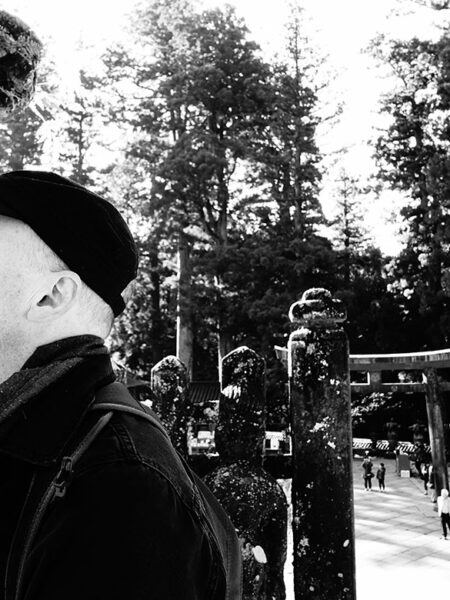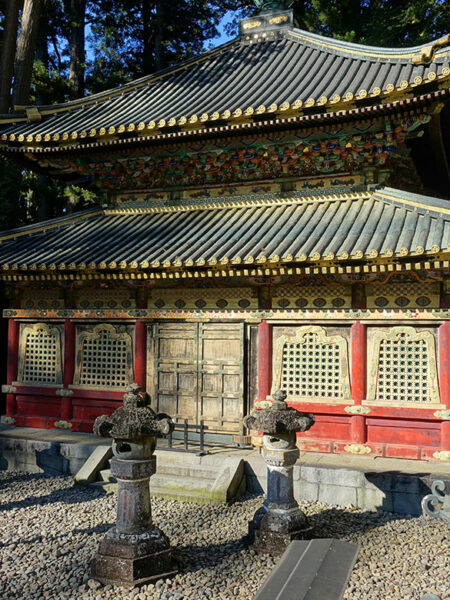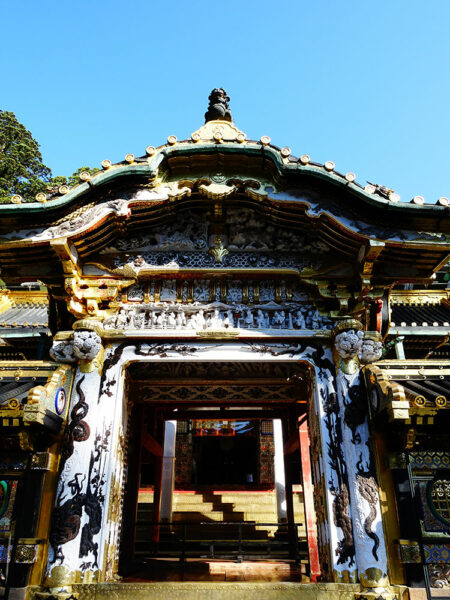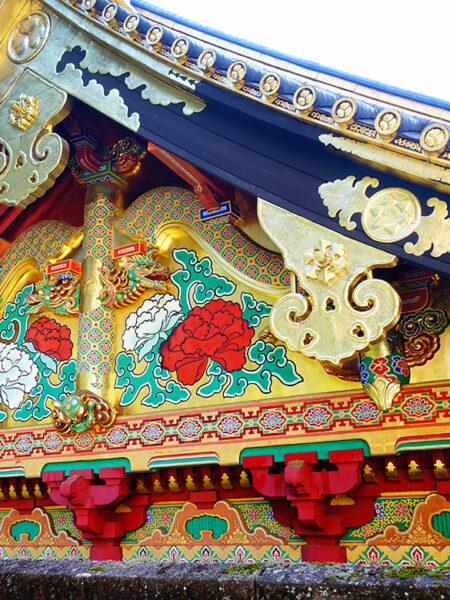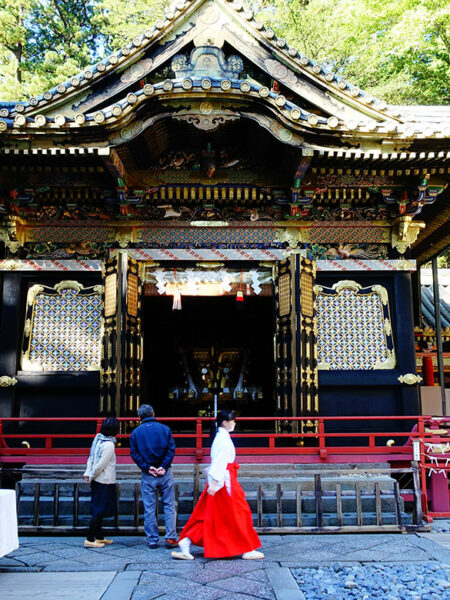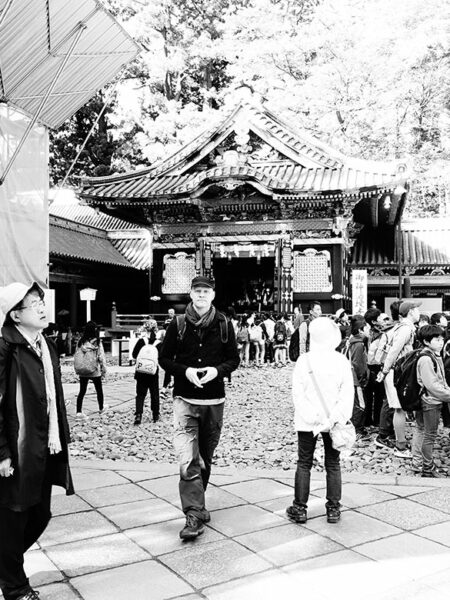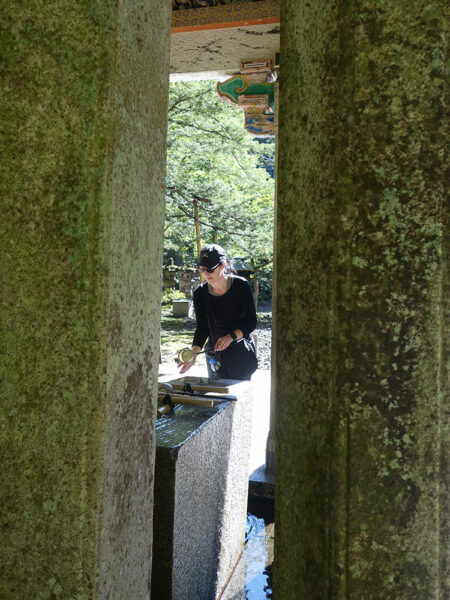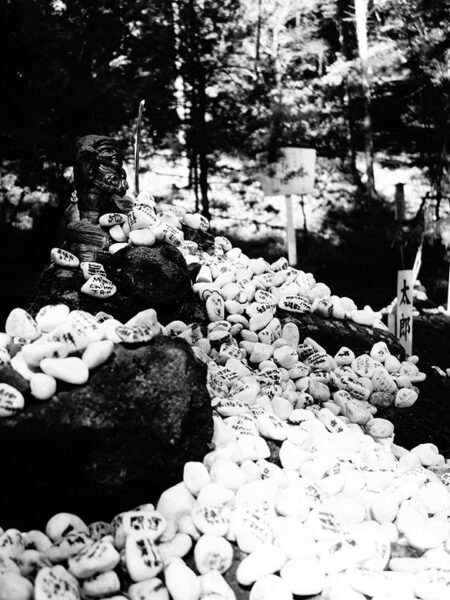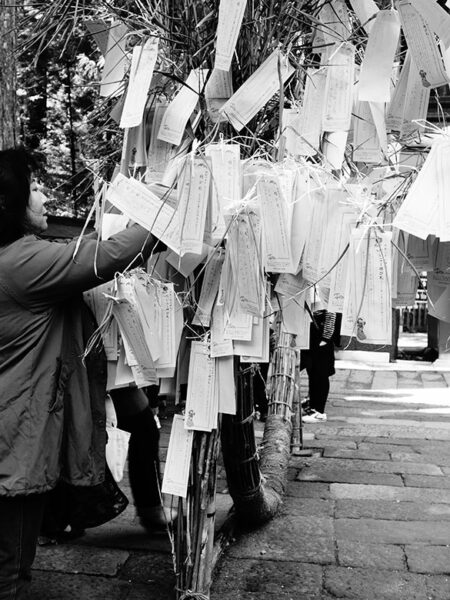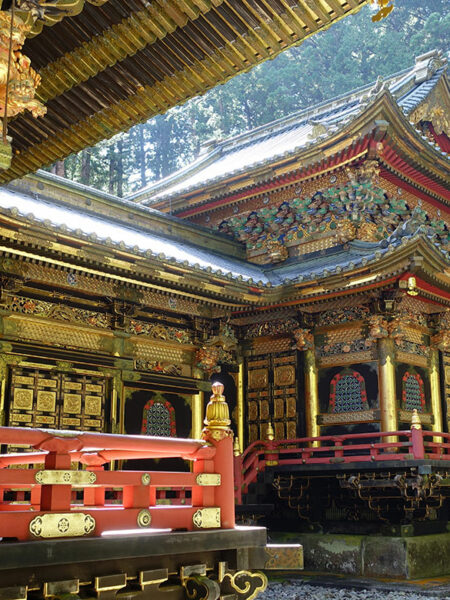Hard bed on the floor last night – at Honke Bankyu they laid down two futons each, but here we just had the one, and it felt marginally better than sleeping on a thick carpet.
Temple-viewing and travelling filled our day today. We began with breakfast in the hotel dining room – we were the first to front up, just before 7am – a Western-style breakfast for Carol and a Japanese-style one for me. Then we left our packed bags at the counter and walked the short distance to the main temple complex of Tosho-gu.
The shrine (and other shrines in the Nikko temple area) is surrounded by a beautiful forest of tall, straight cypresses, and the interconnecting roads and paths are lined with mossy stone walls of fitted blocks that reminded me of the Aztecs. We arrived at the Ishidorii, a huge stone torii, at the 8am opening time and already a queue was forming at the ticket office, but despite huge packs of schoolchildren and groups of tourists led by flag-bearing tour guides, it wasn’t really as packed out as we had expected for a weekend. Several large and ornate gates were under scaffolding unfortunately (there’s a lot of renovation going on in preparation for the 2020 Olympics) but it was still an impressive and otherworldly place, and the building decoration intricate and colourful.
Something that really struck me is how much of the thriving business Japanese Buddhism is. Almost every possibility is exploited for cash, whether it’s the trinket and charm stalls (some within the shrines themselves), the boxes in front of every image so the faithful can throw in coins before bowing, clapping hands and wishing (sorry, praying), and of course the entrance fees. There was a separate entrance fee for each shrine because, apparently, the temples all can’t agree on a one ticket system.
It’s like a superstition theme park – at one shrine, there were places where people wrote wishes on little white stones and piled them on rocks; a space where people had written on wooden love hearts and thrown them in a pile; and at the huge Rinno-ji temple, in the process of being rebuilt, you could write on wooden tiles to be placed inside the restored roof. In every case of course, for a fee – because wishes ain’t free; and the coins are being raked in. Do all these people really think that these millions of purchased wishes make a difference to anyone’s lives? Humans are a funny lot.
Behind the Tosho-gu complex, up steep stone stairs, was the Okumiya, the tomb of Ieyasu, who established the Tokugawa shogunate and died in 1617 – the first shogun. A beautiful, solemn spot among the tall pines which was in lovely contrast to the more gaudy temples below. He was quite a warrior and general, but lamented the fact that he got so fat later in life that he couldn’t get on his horse… I’m currently reading about him in the book Samurai William: The Englishman Who Opened Japan by Giles Milton, which is an enjoyable read.
After exploring the complex thoroughly, being sure to see things like the three wise monkeys carved on the sacred stables and a famous painted carving of a sleeping cat, we walked to the nearby Futarasan-jinja, the oldest of the shrines, then to the Taiyuan-byo, another beautiful spot and the resting place of Ieyasu’s grandson, who built most of the Toshu-gu in 1636.
Lastly, we visited the aforementioned Rinno-ji, which should be an astounding sight when the renovation and rebuilding is finished and the huge outer building surrounding it is dismantled. For now, there’s a picture of it on the outside. Inside, three eight metre tall gilded Buddha statues are on display behind transparent plastic sheeting. We could also walk up to the top of the surrounding building to see the roof construction work being done (and get a good view of the countryside).
The rest of the day, we took advantage of Japan’s excellent, clean, efficient rail system to get to Takayama – 570 kilometres, 334 minutes and 3 rail transfers from Nikko. Our only glitch during this journey was having to sit next to two sick, sniffing and coughing men on one leg of the trip. At least the guy next to me wore a mask but the man next to Carol (we were sitting in separate rows because the green car had been almost booked out) was just disgusting. So we decided to forgo our paid-for green car luxury to escape them and go back to the ‘cheap seats’. Using nasal spray, hand wipes and, this evening, antiseptic gargles, hopefully we’ve also escaped any travel-ruining lurgies!
We arrived in Takayama at 6:30pm, after dark, and found our hotel near the station. I went out by myself and, eventually, found vegetarian chow mien for Carol (from an Indian and Chinese place run by Indians speaking Japanese) and (excellent) katsu-don (pork cutlet and rice) for me, plus wine and beer from a supermarket. Lots of sheep-like tourists wandering about in this part of town, clogging up supermarket aisles looking confused!
Hard beds again tonight, despite being a normal hotel room with above-the-floor beds.
Travelling in Japan is so easy, I’m amazed I haven’t been here before now. We’re both having a fantastic trip.

